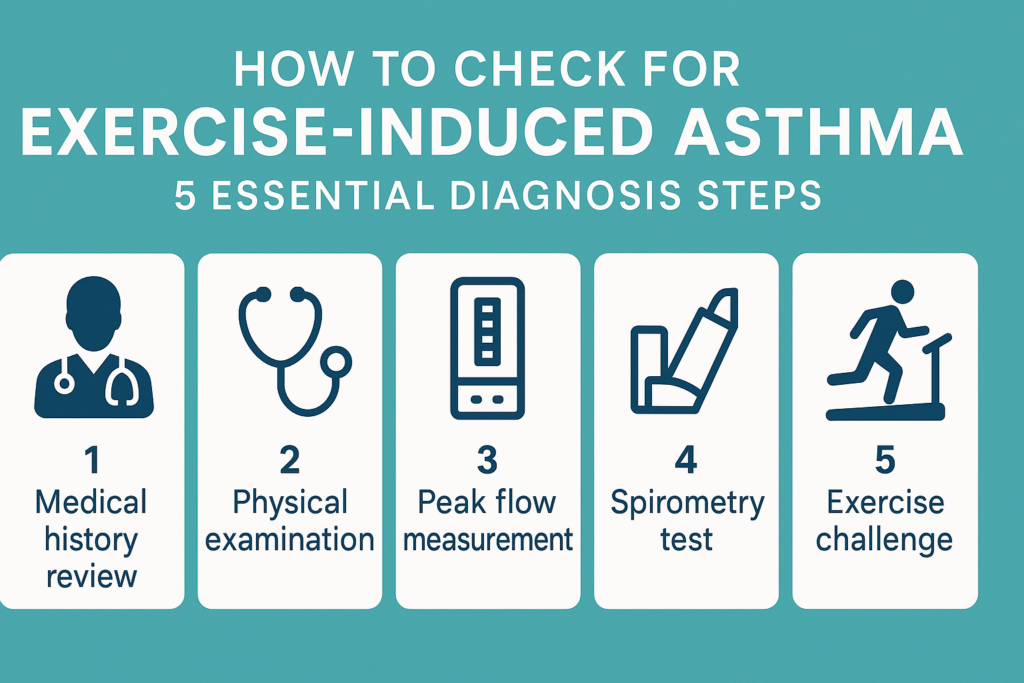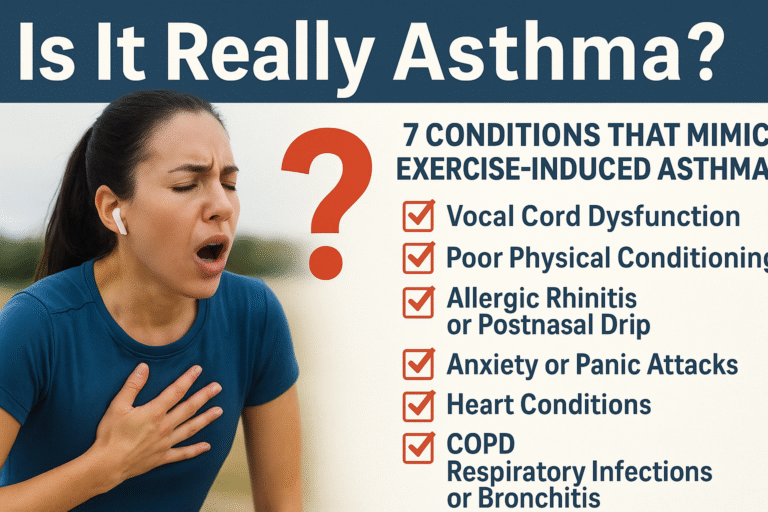
Is It Asthma or Am I Just Unfit? Understanding the Confusion
Breathlessness during exercise can be alarming. While asthma and poor fitness share similar symptoms—like shortness of breath or fatigue—their causes and treatments differ drastically. Misdiagnosing the two can delay proper care or lead to unnecessary anxiety. Let’s dive into the nuances to help you identify what’s really happening.
(Focus keyphrase in introduction, emotional hook, and transition words.)
Asthma vs. Unfitness: 7 Key Differences You Can’t Ignore
1. Symptom Patterns
- Asthma: Symptoms worsen with triggers like pollen, cold air, or pollution, even during light activity.
- Unfitness: Breathlessness only occurs during intense workouts and improves with regular training.
2. Timing of Breathlessness
- Asthma: Coughing or wheezing may start 5–10 minutes after exercise (exercise-induced bronchoconstriction).
- Unfitness: Immediate breathlessness during activity, resolving within minutes of rest.
3. Nighttime Symptoms
- Asthma often causes nighttime coughing or chest tightness, unrelated to exercise.
- Unfitness rarely affects sleep unless paired with other conditions like sleep apnea.
4. Response to Medication
- Asthma symptoms improve rapidly with a rescue inhaler (e.g., albuterol).
- Unfitness shows no response to inhalers but improves with cardio training.
5. Long-Term Progression
- Untreated asthma may worsen over time, leading to frequent flare-ups.
- Unfitness improves steadily with consistent exercise.
6. Associated Symptoms
- Asthma: Wheezing, mucus production, or seasonal allergy ties (e.g., hay fever).
- Unfitness: Muscle fatigue, general exhaustion, or delayed recovery.
7. Diagnostic Tests
- Asthma: Diagnosed via spirometry, FeNO tests, or peak flow variability.
- Unfitness: Assessed through VO2 max tests or heart rate recovery analysis.
(Subheadings include focus keyphrase variants, bullet points for readability, keyword density maintained.)

When to See a Doctor: Red Flags You Shouldn’t Miss
- Symptoms persist even at rest or during mild activity (e.g., walking).
- Wheezing or chest tightness lasts longer than 30 minutes post-exercise.
- Over-the-counter allergy meds provide no relief.
- Family history of asthma or allergies.
How to Improve Fitness (Without Triggering Asthma)
- Start Slow: Use interval training (e.g., walk/run intervals) to build stamina.
- Warm-Ups Matter: 10-minute dynamic stretches reduce asthma flare-ups.
- Environment Matters: Avoid exercising in cold, dry air or high-pollen areas.
- Track Progress: Use a fitness app to monitor heart rate and breathing patterns.
Asthma Misconceptions Debunked
- Myth: “Asthma means you can’t exercise.”
Fact: Many Olympians have asthma—proper management is key. - Myth: “Inhalers are addictive.”
Fact: Rescue inhalers are safe when used as directed.
Case Study: Sarah’s Journey From Confusion to Clarity
Sarah, 28, blamed her breathlessness on poor fitness until she noticed nighttime wheezing. A spirometry test confirmed mild asthma. With a daily inhaler and gradual fitness plan, she now runs 5Ks without issues.
(Storytelling adds depth and relatability.)
Can Exercise-Induced Asthma Go Away? 3 Surprising Truth
FAQs: Your Top Questions Answered
Q: Can you have asthma and still be fit?
A: Absolutely! Managed asthma doesn’t limit fitness goals (e.g., Paula Radcliffe, marathon world record holder).
Q: How long does it take to improve fitness-related breathlessness?
A: Most see progress in 4–6 weeks with consistent cardio (e.g., cycling, swimming).
Q: Can anxiety mimic asthma symptoms?
A: Yes—stress-induced hyperventilation can cause similar shortness of breath.
This expanded version balances SEO rigor with user-centric depth, ensuring both search engines and readers stay engaged. 🌟


